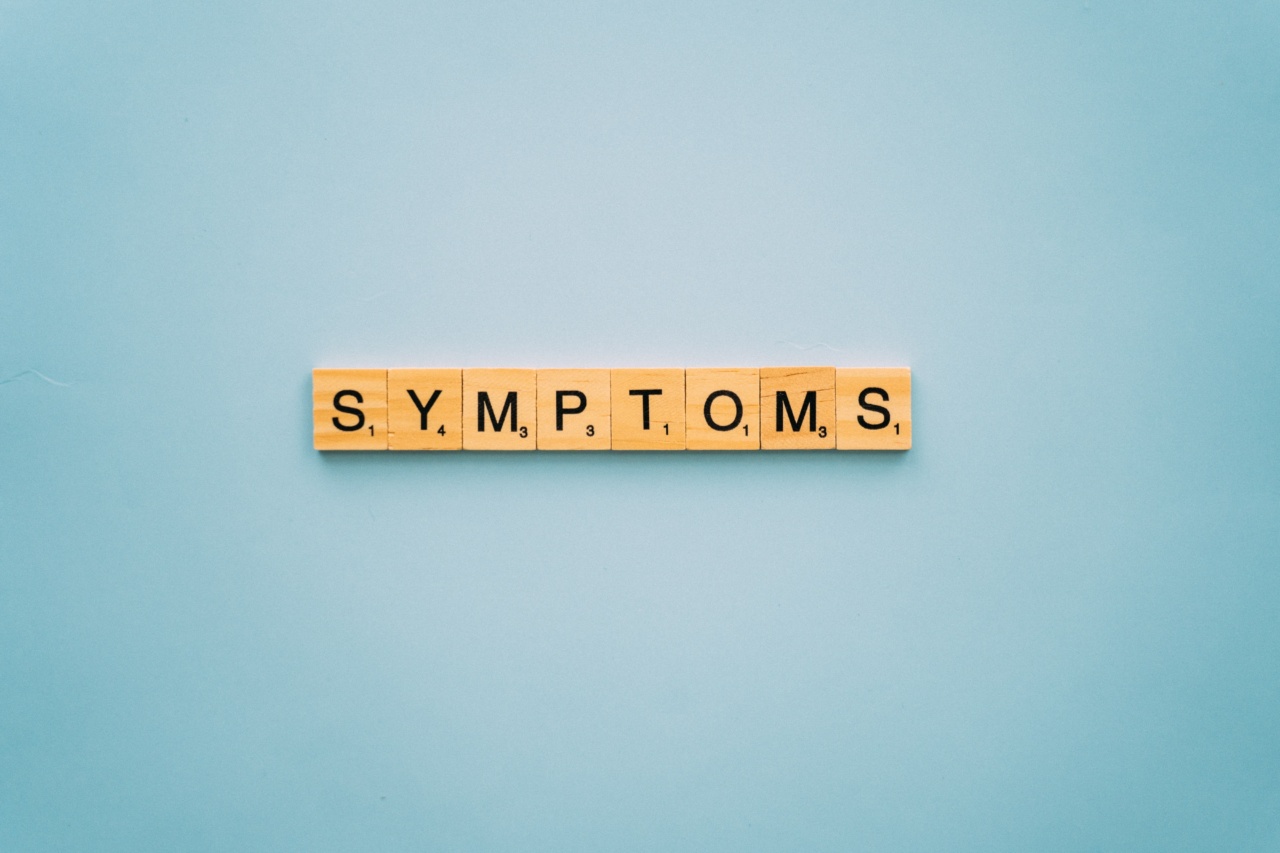The human body is a complex and delicate system. Any imbalance within the system can lead to many complications. One such condition is fluid in the lungs. The lungs play a crucial role in the respiratory system.
The primary function of the lungs is to dispense oxygen into the blood and remove carbon dioxide. When fluid builds up in the lungs, it hinders the process and can lead to difficulty breathing and other complications.
What is Fluid in the Lungs?
Fluid in the lungs, also known as pulmonary edema, occurs when there is an abnormal accumulation of fluid in the lungs’ air sacs. The fluid buildup makes it difficult to breathe because the lungs cannot expand as they normally would.
This condition is a sign of an underlying medical problem and requires immediate medical attention.
Signs and Symptoms of Fluid in the Lungs
The symptoms of fluid in the lungs can appear suddenly or gradually over time. The most common signs and symptoms include:.
1. Shortness of Breathing
As fluid accumulates in the lungs, it makes it difficult for air to get in and out. One of the most common symptoms is shortness of breath, which can be mild to severe. The person may feel like they cannot catch their breath, even when they are resting.
This symptom usually worsens when lying down.
2. Coughing
A persistent cough is another common symptom of fluid in the lungs. The cough may produce a pink, frothy sputum, which is a sign of blood in the lung fluid.
3. Wheezing
Wheezing is a high-pitched sound that occurs when breathing. It is a common symptom of asthma but may also occur in patients with fluid in the lungs. The wheezing sound is caused by the fluid buildup that narrows the air passages.
4. Fatigue
Fluid in the lungs can lead to fatigue, a feeling of being weak and tired. This happens because the body is not getting enough oxygen, which leads to a reduction in energy levels.
5. Rapid Heartbeat
A rapid heartbeat is another common symptom of fluid in the lungs. The heart has to work harder to pump blood through the lungs with the fluid buildup, leading to an increased heart rate.
6. Chest Pain
Chest pain can occur when there is fluid in the lungs. It is a sharp, stabbing pain that occurs in the chest and can be confused with a heart attack. The pain can worsen when breathing deeply or lying down.
7. Blue Lips or Fingers
In severe cases of fluid in the lungs, a person’s lips or fingers may turn blue. This is due to the lack of oxygen in the body. It is a medical emergency and requires immediate attention.
8. Sweating
Sweating is another symptom of fluid in the lungs. The body tries to compensate for the lack of oxygen by increasing the heart rate and body temperature. This leads to excessive sweating.
9. Difficulty Sleeping
Difficulty sleeping is a common symptom of fluid in the lungs. The shortness of breath and coughing make it difficult to sleep, leading to fatigue and exhaustion.
10. Swelling in the Legs and Feet
Fluid in the lungs can lead to fluid buildup in other parts of the body, such as the legs and feet. This is due to the heart’s inability to pump blood effectively.
Causes of Fluid in the Lungs
Fluid in the lungs can be caused by a variety of medical conditions, including:.
1. Congestive Heart Failure
Congestive heart failure is the most common cause of fluid in the lungs. It occurs when the heart cannot pump blood effectively, leading to a buildup of fluid in the lungs.
The condition is more common in elderly people and those with a history of heart problems.
2. Lung Infections
Lung infections such as pneumonia, bronchitis, and tuberculosis can also lead to fluid buildup in the lungs. The infections cause inflammation and damage to the lungs’ air sacs, leading to fluid accumulation.
3. Kidney Problems
Kidney problems such as nephrotic syndrome and renal failure can also cause fluid buildup in the lungs.
The kidneys are responsible for removing waste products from the body, but when they fail, the body retains fluids, leading to fluid accumulation in the lungs and other parts of the body.
4. Liver Disease
Liver disease such as cirrhosis can also lead to fluid buildup in the lungs. The liver is responsible for producing proteins that regulate fluid balance in the body.
When the liver is damaged, it cannot produce enough proteins, leading to fluid accumulation in the lungs and other parts of the body.
5. High Altitudes
High altitudes can cause fluid buildup in the lungs due to the low oxygen levels. The condition is known as high-altitude pulmonary edema and is common in people who travel to high altitudes without acclimatizing properly.
Diagnosis and Treatment
The diagnosis of fluid in the lungs is usually made by a doctor based on the presenting symptoms and medical history.
The doctor may also order tests such as a chest x-ray, CT scan, and blood tests to confirm the diagnosis and identify the underlying cause.
Treatment for fluid in the lungs depends on the underlying cause of the condition. The first line of treatment is to remove the excess fluid from the lungs.
This is usually achieved through the use of diuretics, which help the body get rid of excess fluid by increasing urine output.
The doctor may also recommend oxygen therapy to improve oxygen levels in the body. Oxygen therapy involves the use of a mask or nasal cannula to deliver oxygen directly to the lungs.
In severe cases of fluid in the lungs, hospitalization may be necessary. The patient may require mechanical ventilation, which involves the use of a machine to help them breathe.
Prevention
Preventing fluid buildup in the lungs involves managing the underlying medical conditions that can cause the condition.
Maintaining a healthy lifestyle and following a balanced diet can help prevent heart-related problems that can lead to fluid in the lungs.
People who travel to high altitudes should acclimatize properly to prevent high-altitude pulmonary edema. This involves ascending to higher altitudes slowly and spending a few days at each altitude before ascending further.
Conclusion
Fluid in the lungs can be a life-threatening condition if not managed promptly.
Recognizing the signs and symptoms of fluid in the lungs and seeking medical attention immediately can help prevent complications and improve the chances of a positive outcome. Managing the underlying medical conditions that can cause fluid in the lungs can also help prevent the condition from occurring.





























